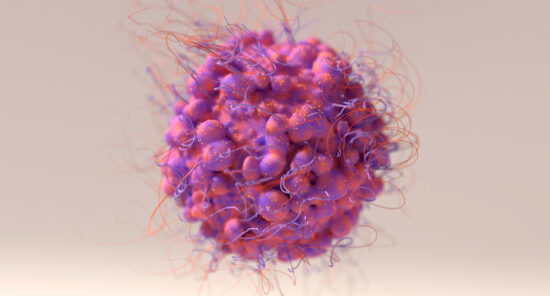Credit: Original article published here.
Kidney stone disease has an estimated prevalence of 8%-9%, and is associated with substantial rates of recurrence. While not completely understood, both genetic and environmental factors are known to be associated with the formation of kidney stones. Major international guidelines on the diagnostic workup and clinical management of patients with kidney stones emphasize the use of metabolic evaluation, including 24-hour urine collection to determine parameters that include volume, pH, calcium, oxalate, citrate, uric acid, potassium and magnesium.
However, according to Pietro Manuel Ferraro, MD, MSc, PhD, and colleagues, there are conflicting data regarding actual implementation of 24-hour urine collections. In addition to imprecision and incompleteness, collecting urine throughout the day is perceived as being impractical and difficult to perform in clinical practice.
The researchers conducted an analysis to assess the performance of spot urine measurement to estimate 24-hour excretion in patients with kidney stones. Results of the analysis were reported in Nephrology Dialysis Transplantation [2022;37(11):2171-2179].
The study recruited 74 adult patients ≥18 years of age with urinary stone disease from two centers (BioHealth Italia, Torino, Italy, [n=54] and Tufts University School of Medicine, Maine Medical Center, Portland, Maine, USA, [n=20]) from October 2013 to September 2014. At both centers, patients were instructed to perform a complete 24-hour urine collection, starting from the second micturition of a given day, and including the first of the subsequent day. A sample of the latter, collected in the fasting state, was taken for spot urine analysis.
In the Tufts study population, patients were also asked to collect two additional spot urine samples, one before dinner and the other after dinner. Demographic and clinical data (age, sex, weight, and height) were collected for all patients. All study participants were White.
Urinary concentrations of creatinine, calcium, oxalate, uric acid, citrate, and magnesium were measured on both 24-hour and spot samples. Daily urinary excretions were computed by multiplying the urinary concentration of each analyte by the urine volume over 24 hours. Urine samples from the Tufts cohort were analyzed by Litholink; samples from the Torino cohort were analyzed at the laboratory of Mauriziano Hospital (Torino, Italy).
The study utilized four approaches to estimate 24-hour urinary excretion, multiplying the ratio of the spot urinary analyte to creatinine concentration by (1) measured 24-hour urinary creatinine excretion (Prediction 1); (2) estimated 24-hour urinary creatinine excretion (Prediction 2); (3) assumed 1-g 24-hour urinary creatinine excretion (Prediction 3); or (4) assumed 1.5-g 24-hour urinary creatinine excretion (Prediction 4). For each parameter, the researchers computed Lin’s concordance correlation coefficients (CCCs), Bland-Altman plots, and 95% limits of agreement.
The two cohorts were similar, with the exception of a larger proportion of females and higher body weight and body mass index in the cohort at Tufts. Urine chemistries were comparable across samples, with the exception of higher urinary creatinine in the Tufts sample.
Estimated urinary creatinine excretion exhibited a Lin’s CCC of 0.62 (95% CI, 0.49-0.75), bias –132 mg (95% CI, –828 to 564 mg), and P30 79.7%. Conversely, assuming a daily excretion of 1-g was imprecise: the median difference between measured and assumed urinary excretion was 511 mg, with 49 patients (65.3%) showing values of measured creatinine excretion below (1 patient [1.4%]) or above (48 patients [64.9%]) the 30% assumed creatinine excretion.
Overall, the performance of estimates obtained with Prediction 1 and Prediction 2 was similar for all parameters, with the exception of citrate and uric acid. For those two parameters, Prediction 2 performed significantly worse. In general, both estimation approaches performed adequately well in predicting 24-hour urinary excretion.
The approaches performed particularly well for citrate (CCC 0.82 [95% CI, 0.75-0.90] for Prediction 1 and CCC 0.67 [95% CI, 0.54-0.79] for Prediction 2). Performances on other parameters were considered to be adequate: oxalate (CCC 0.66 [95% CI, 0.55-0.78] for Prediction 1 and CCC 0.63 [95% CI, 0.52-0.74] for Prediction 2); magnesium (CCC 0.66 [95% CI, 0.54-0.77] for Prediction 1 and CCC 0.66 [95% CI, 0.52-0.78] for Prediction 2); and calcium (CCC 0.63 [95% CI, 0.50-0.75] for Prediction 1 and CCC 0.63 [95% CI, 0.49-0.77] for Prediction 2 ).
The approaches did not perform well for uric acid (CCC 0.52 [95% CI, 0 .36-0.68] for Prediction 1 and CCC 0.30 [95% CI, 0.10-0.49] for Prediction 2).
Compared with the other approaches, the performance of Prediction 3 was consistently worse. Performances for Prediction 4 were similar to those of Predictions 1 and 2 for some parameters and worse for others.
Results of analysis of performance of spot urine samples taken at different times in the Tufts cohort suggested no major differences with the exception of postprandial oxalate and citrate, which performed worse. In general, postprandial samples tented to perform numerically worse compared with fasting morning and preprandial samples with the exception of uric acid. There were no noticeable differences in performance when using various combinations or averages of the three spot samples.
The authors cited some limitations to the study including the relatively small sample size, the study population including only White patients, and the lack of repeated measurements for the same participant over time.
In conclusion, the researchers said, “Spot urine samples combined with specific indexing techniques may be useful in population-based studies or urinary stone disease. Our data do not suggest at present that spot urine samples can replace 24-hour collections for direct patient care. Future studies in this area will need to employ measured or estimated 24-hour urinary creatinine rather than assuming a given creatinine excretion.”
Takeaway Points
- Researchers reported results of a study designed to assess the performance of spot urine measurement to estimate 24-hour excretion in patients with kidney stone disease.
- The study compared four approaches to predicting 24-hour urine excretion based on spot urines.
- While the study data do not support using spot urine in the management of kidney stone disease, spot urine samples may be useful for clinical and population-based research.


